They’re often pitted against one another, but new research from Paul Kerensa has revealed it hasn’t always been this way. Can the Sleighman and the Saviour be friends after all?
Ho ho hallelujah! As Christmas comes around again, with it arrives the familiar battle between sacred and secular. The face of Christmas, as decreed by the Western world, seems to be a certain benevolent bearded gent – once again frustrating those Christians who think the spotlight is shining on the wrong man.
Santa vs Jesus has become such a well-known duel, it’s even been made into a board game (I’ve never seen Christians play it; I suppose we know who wins). But the jolly old man has only begun ignoring the Christ-child in recent decades. Research shows that not too long ago, the first-ever BBC drama portrayed Father Christmas as the fourth wise man! In this newly discovered story, the infant Jesus inspires St Nicholas to be generous to all children, with the Christmas spirit living on in the hearts of all.
Father Christmas and Santa Claus have lately merged into the same chimney-bound gift-bringer, but their unique histories took rather distinct paths. At various times in Yules of yore, both figures have pointed to Christianity.
In this age of divisiveness, I wonder if we should think less of ‘Santa vs Jesus’, and more of the former pointing to the latter. If we have to take sides, I’m always on Jesus’ – but is it too late for Father Christmas to remember whose name he really bears?
Fighting for Jesus
It’s one of history’s great ironies that a sainted bishop who dedicated his life to Christ accidentally took over his annual birthday celebration. (I’ve known friends like that at some parties.)
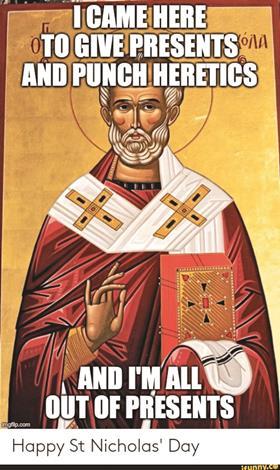
The quirks of fate continue: St Nicholas lived in a town named after myrrh (Myra) in a country that now shares its name with a festive bird (you can work that one out for yourself). Yet in his lifetime, he had no connection with Christmas. In fact, he has a much greater affiliation with another event, as one of around 300 bishops at the Council of Nicaea to rule on the date of Easter.
Legend has it (and his story has a lot of ‘legend’ in it), that Bishop Nicholas was so angered by a heretic at the Council, he slapped him in the face – and was handed a prison sentence for his trouble. Here Nicholas saw a vision of Jesus and the virgin Mary, who freed him after he explained his punishment was “for loving you”.
This story is just one example of Nicholas as a man of both faith and action. The heretic he confronted, either Arius or one of his followers, believed “that there was a time when the Son was not” – that Jesus came after God the Father. So, when you next see the red cheeks of Santa, remember that he once made someone else’s cheek red, in defence of Christ’s place in the Trinity.
Going viral
The anniversary of Nicholas’ earthly demise, 6 December, soon became St Nicholas Day. Bishop became saint, then patron saint of sailors – which turned out to be an ideal way to send legends viral in the Early Middle Ages, as ships took his life story across Europe with their cargo.
Tales of his generosity spread, including his famous lobbing of bags of gold through a widower’s open window, landing where stockings warmed by a fireside. There was talk of miracles too – standing as a newborn baby to pray at an altar or using the sign of the cross to resurrect three youths pickled in a barrel. Regardless of the historical truth, the point is clear: St Nicholas was a holy man of great faith.
The Dutch particularly welcomed him, tweaking his name to Sinterklaas. Northern Europe mixed him with other legendary characters, before long sending him skyward on flying animals – at first a horse, long before any reindeer games.
The Reformation saw many saints downplayed, but Sinterklaas clung on. When Dutch Settlers settled (it’s what they do), New York’s first church was dedicated to St Nicholas. Ultimately his link with the city would result in poetry (’Twas the night before Christmas) and classic films (Miracle on 34th Street). He may have become rather big for his fur-lined boots, but his 1,700-year-old journey shows that you can’t keep a good story down.
But a good story isn’t enough. The original St Nicholas treasured the greatest story ever told. Yet today’s version barely reflects that. Maybe his English chum Father Christmas will fare better…
When Father Christmas was young
Meanwhile in Merrie Old England, Father Christmas grew up rather differently.

Some point to his pagan origins in Old Man Winter – a far cry from the jolly, generous, chubby old jelly-belly of Santa. But for the earliest personification of Christmas, we go to a Devon church in the 15th century, when a mystical stranger had good news to spread.
Richard Smart was rector of Plymtree church and, as vicar-choral of Exeter Cathedral, was known as “Devon’s first musician”. Like an early Cliff Richard, he had several Christmas songs to his name, including a popular Boar’s Head Carol and another known as Sir Christèmas.
In this carol, the titular character announces his arrival singing “Nowell!” (Old French for the Christmas season), until others ask who he is and what he wants. “I am here, Sir Christèmas!” comes his reply, and he’s welcomed in. This cheery fellow then tells all who’ll listen: “A maid hath bore a Child full young…Christ is now born of a pure maid, In an ox stall, He is laid…”
The entrance of Mr Christmas into British culture was by proclaiming Christ’s birth – and he was welcomed as he did so. May we all be welcomed in when we do the same. (A sidenote, but most versions of this carol – and there are a few – have ‘Child’ or ‘Chylde’ capitalised. If we elevate the first letter of ‘Jesus’ and ‘Christ’ and ‘Son’, why not ‘Child’ too? I admire Sir Christèmas and his respectful devotion – fictitious though he may be).
Pick a side, pro-or anti-Christmas: the Brexit of its day
In Rev Smart’s day, Christmas was still a mostly sacred occasion. But 150 years later, Ben Johnson’s play Christmas, His Masque debuted in a London where religion had been overtaken by revelry. The Church festival was under threat from Puritans, so Johnson created a character in its defence. ‘Old Christmas’ had a long beard and a claim to be “as good a Protestant as any in my parish”. Arriving at a party in his name, he was shocked to find he wasn’t allowed in.
Fifty years later, in 1644, Oliver Cromwell and his government finally got their way and banned Christmas. So, the bearded Old Christmas reappeared in propaganda cartoons: one passer-by tells him to “come not here”, as another says, “Old Christmas welcome, do not fear”. Pick a side, pro-or anti-Christmas: the Brexit of its day.
For the next few centuries, Father Christmas cropped up in folk plays: “Here comes I, old Father Christmas, welcome or welcome not,” he declared in an 18th-century Cornish pageant. He’d often represent how we used to merrily celebrate Christmas – even if we never did.
A choice then: welcome the celebration of Christmas or not? And what does it look like when we do? Because if you hadn’t noticed, Father Christmas hasn’t mentioned Jesus for a while. But that’s about to change.
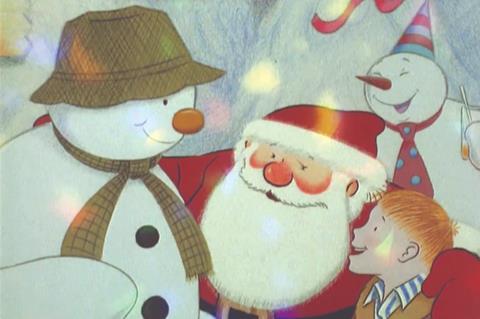
The first radio drama
The broadcast age opened with the Bible. The first telegraph message in 1844 was Samuel Morse asking what wonders “hath God wrought?”. The first speech broadcast in 1906 was a recital from Luke’s Nativity account of the annunciation to the shepherds.
For the first British broadcasting Christmas in 1922, the six-week-old BBC added new innovations to their usual schedule of news and music: the first celebrity on air, Children’s Hour and a religious broadcast from Rev John Mayo. After his Christmas Eve talk came the first BBC drama: The Truth about Father Christmas by Phyllis Twigg.
With neither a recording nor a script, the title was pretty much all that survived. Partly due to this, later writer Richard Hughes is generally credited for inaugurating radio drama.
But I felt sorry for Phyllis Twigg so, last year, I spent several months on her trail. I was baffled that she seemed to write nothing else, until I discovered her name-change. It turns out that she adapted her original script into a short story, which I found under her pen name at the British Library.
The Truth about Father Christmas is Twigg’s tale of Father Christmas visiting her in a dream, to reassure her distraught daughter. It tells of how he: “became what was known as a Wise Man. But I was not wise enough, for when three friends of mine urged me to join them in a long, difficult journey in search of the Christ Child at Bethlehem, I would not go.”
That first radio play has Father Christmas – “so gracious, so loving, so friendly to the lonely” – tell the nation of the Wise Men following the star and presenting gifts to Jesus. Inspired by Jesus’ love for children, he decided: “that though it was too late to offer him any gifts, as my friends had done, I would do something in his name for the children he had loved. I decided that on Christmas Day I would try to make all little ones happy.”
Then, Father Christmas vanished – perhaps, as he was being played by the first BBC newsreader Arthur Burrows, because he had to prepare for the headlines.
More recent Christmas broadcasts tend to separate religion from entertainment, though some still seek the spiritual in the everyday – whether a melting Snowman or Charlie Mackesy’s moving The Boy, the Mole, the Fox and the Horse (Collins). Christmas is perhaps a time when we let in stories that reach us on a deeper level.
America has been more prone to occasionally include the gospel in their festive fictions. My favourite is A Charlie Brown Christmas, when Charlie’s cry of “Isn’t there anyone who knows what Christmas is all about?!” results in Linus’ recital of Luke chapter 2, dropping his comfort blanket on the words “Fear not”.
Sadly, I can’t claim to have contributed much profound content to the airwaves this time of year. While I’ve helped write a dozen or so BBC Christmas specials, all were episodes of sitcom Not Going Out, with more cracker jokes than preaching opportunities. But it’s nice to know that the BBC’s first scripted programme highlighted a divine example of kindness and generosity. Whether or not Radio 4 might retell that original drama now we know its storyline…watch this space (or listen to it).
Maybe The Truth about Father Christmas is that he might point to Christ as a way of living, if only we’d let him in. Like that cartoon signpost reading ‘North Pole’, perhaps Father Christmas and Santa are just there to show us the way.
Santa and friends
The stories of St Nicholas and his friends Sinterklaas, Santa and Father Christmas veer from truth to legend to myth to fiction. St Nicholas lived, I’m sure of that – but the rest is hearsay of varying degrees. I can believe that he threw some gold bags at a fireside, but I have doubts over the flying horse – or reindeer.
I wonder if tales like these aren’t so concerned about sorting fact from fiction. St Nicholas was good and kind, and we can be too. “For God loves a cheerful giver”, as St Paul advises (2 Corinthians 9:7).
We should think less of ‘Santa vs Jesus’, and more of the former pointing to the latter
The historical truth of Jesus’ life story is another matter. It’s almost beyond dispute that Jesus was born to a poor family in a dusty stable. He lived, walked, talked and taught, gaining many followers. He was arrested, tried and put to death. Christians believe that he did so for our sins, that he returned and ascended, and is a presence in our lives today.
Now and then, through their cultural history, it seems that Santa and Father Christmas believed that too. Perhaps in stories that we may yet welcome in, they might believe it again.

Paul Kerensa is the writer behind the new BBC radio 4 drama The Truth about Phyllis Twigg. It will air on 24 December at 2:15pm





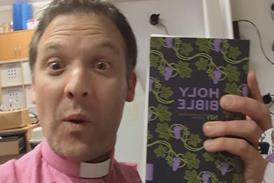





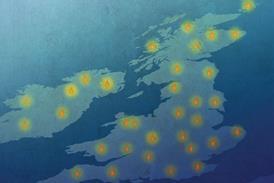


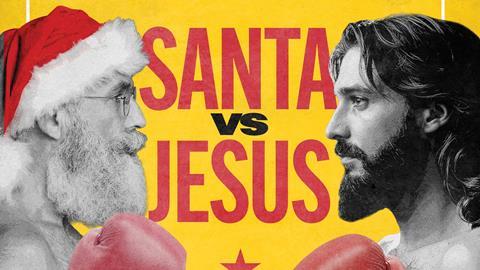



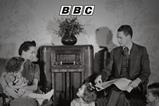





![Jesus-myths-01-[Recovered]](https://d17xjl6rg4e8ic.cloudfront.net/Pictures/100x67/6/3/7/45637_jesusmyths01recovered_933246.jpg)















No comments yet